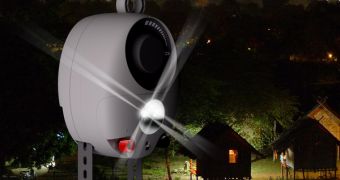More often than not, specialists who take the time to develop ways of improving the living conditions of people in developing countries focus on harvesting either solar, kinetic or wind power in order to provide them with access to clean and cheap electricity.
Still, two London-based designers, Martin Riddiford and Jim Reeves, decided to look into the possibility of using the force of gravity to generate light.
Thus, they’ve managed to design and piece together a device known as GravityLight, which uses the laws of gravity to create light.
The working principles behind the GravityLight took years to perfect, yet they are pretty straightforward.
One must simply lift the weight that powers the devices (Martin Riddiford and Jim Reeves claim this only takes about 3 seconds), and as the weight descends it creates about 30 minutes of light.
These two designers explain that, unlike kerosene lamps, which cause the people using them to become exposed to significant amounts of harmful fumes, and solar lamps, which are fairly expensive and out of reach to those who have no savings, GravityLight is both clean and financially appeasing.
“When mass produced the target cost for this light is less than $5 [€3.86]. (…) With GravityLight it only takes a few seconds to lift the weight, which creates enough energy for half an an hour of light, whenever it is needed. It has no batteries to run out, replace or dispose of. It is completely clean and green,” reads the device's description on Indigo.
Furthermore, “Because there are no running costs after the initial low cost purchase, it has the potential to lift people out of poverty, allowing them to use the money they have saved to buy more powerful solar lighting systems in the future.”
The two designers are presently trying to raise the funding needed in order to jump-start the large-scale production for this device, and those who might want to support this project are invited to make their contribution.
More information about GravityLight is made available to you in the video below.

 14 DAY TRIAL //
14 DAY TRIAL //